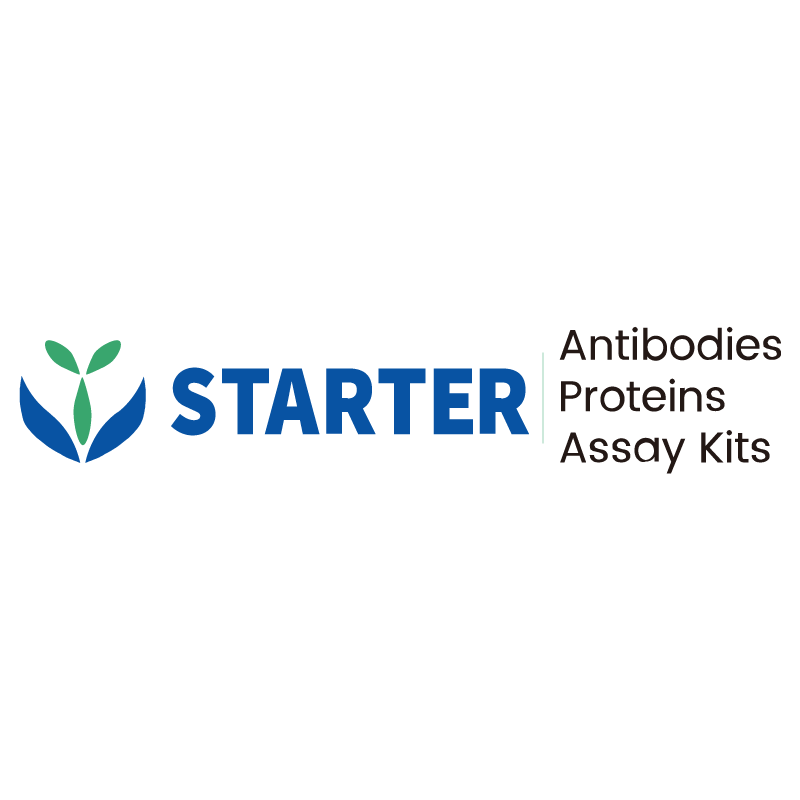WB result of Histone H4 (acetyl K16) Recombinant Rabbit mAb
Primary antibody: Histone H4 (acetyl K16) Recombinant Rabbit mAb at 1/1000 dilution
Lane 1: untreated HeLa whole cell lysate 20 µg
Lane 2: HeLa treated with 500 ng/ml TSA for 4 hours whole cell lysate 20 µg
Secondary antibody: Goat Anti-rabbit IgG, (H+L), HRP conjugated at 1/10000 dilution
Predicted MW: 11 kDa
Observed MW: 12 kDa
Product Details
Product Details
Product Specification
| Host | Rabbit |
| Antigen | Histone H4 (acetyl K16) |
| Synonyms | H4K16ac |
| Immunogen | Synthetic Peptide |
| Location | Nucleus |
| Accession | P62805 |
| Clone Number | S-1482-12 |
| Antibody Type | Recombinant mAb |
| Isotype | IgG |
| Application | WB, IHC-P, ChIP |
| Reactivity | Hu, Ms, Rt |
| Positive Sample | HeLa, NIH/3T3 |
| Predicted Reactivity | Pl, Dr, Av |
| Purification | Protein A |
| Concentration | 0.5 mg/ml |
| Physical Appearance | Liquid |
| Storage Buffer | PBS, 40% Glycerol, 0.05% BSA, 0.03% Proclin 300 |
| Stability & Storage | 12 months from date of receipt / reconstitution, -20 °C as supplied |
Dilution
| application | dilution | species |
| Dot Blot | 1:1000 | |
| WB | 1:1000 | Hu, Ms |
| IHC-P | 1:500 | Ms, Rt |
| ChIP | 1:20~1:50 | Hu, Ms |
Background
Histone H4 acetylation at lysine 16 (H4K16ac) is a unique histone modification that plays a significant role in the regulation of chromatin structure and gene expression. This modification is catalyzed by the enzyme MOF (MYST-family lysine acetyltransferase), which is evolutionarily conserved and has been implicated in a variety of cellular processes, including the regulation of metabolism, cell cycle control, and cellular responses to DNA damage. It is the only known acetylation mark that is maintained across generations, suggesting its importance in epigenetic inheritance and gene regulation. In the context of metabolism, H4K16ac has been linked to the control of central carbon metabolism and diet-induced obesity in mice. Mice with reduced levels of MOF, the enzyme responsible for H4K16ac, show altered glucose assimilation, impaired insulin response, and resistance to weight gain when fed a high-fat diet. This is associated with changes in the transcriptional regulation of genes involved in glucose uptake and lipid storage in white adipose tissue. Moreover, H4K16ac has been implicated in the regulation of mitochondrial function and ciliary biogenesis.
Picture
Picture
Western Blot
WB result of Histone H4 (acetyl K16) Recombinant Rabbit mAb
Primary antibody: Histone H4 (acetyl K16) Recombinant Rabbit mAb at 1/1000 dilution
Lane 1: untreated NIH/3T3 whole cell lysate 20 µg
Lane 2: NIH/3T3 treated with 500 ng/ml TSA for 4 hours whole cell lysate 20 µg
Secondary antibody: Goat Anti-rabbit IgG, (H+L), HRP conjugated at 1/10000 dilution
Predicted MW: 11 kDa
Observed MW: 12 kDa
Dot Blot
Dot blot result of Histone H4 (acetyl K16) Recombinant Rabbit mAb
Lane 1: H4K16ac modified peptide
Lane 2: H4K16 unmodified peptide
Primary antibody: Histone H4 (acetyl K16) Recombinant Rabbit mAb at 1/1000 dilution
Secondary antibody: Goat Anti-rabbit IgG, (H+L), HRP conjugated at 1/10000 dilution
This blot was developed with high sensitivity substrate
Immunohistochemistry
IHC shows positive staining in paraffin-embedded mouse lung. Anti- Histone H4 (acetyl K16) antibody was used at 1/500 dilution, followed by a HRP Polymer for Mouse & Rabbit IgG (ready to use). Counterstained with hematoxylin. Heat mediated antigen retrieval with Tris/EDTA buffer pH9.0 was performed before commencing with IHC staining protocol.
IHC shows positive staining in paraffin-embedded mouse testis. Anti- Histone H4 (acetyl K16) antibody was used at 1/500 dilution, followed by a HRP Polymer for Mouse & Rabbit IgG (ready to use). Counterstained with hematoxylin. Heat mediated antigen retrieval with Tris/EDTA buffer pH9.0 was performed before commencing with IHC staining protocol.
IHC shows positive staining in paraffin-embedded rat kidney. Anti- Histone H4 (acetyl K16) antibody was used at 1/500 dilution, followed by a HRP Polymer for Mouse & Rabbit IgG (ready to use). Counterstained with hematoxylin. Heat mediated antigen retrieval with Tris/EDTA buffer pH9.0 was performed before commencing with IHC staining protocol.
IHC shows positive staining in paraffin-embedded rat stomach. Anti- Histone H4 (acetyl K16) antibody was used at 1/500 dilution, followed by a HRP Polymer for Mouse & Rabbit IgG (ready to use). Counterstained with hematoxylin. Heat mediated antigen retrieval with Tris/EDTA buffer pH9.0 was performed before commencing with IHC staining protocol.
ChIP
Chromatin immunoprecipitation (ChIP) was
performed on HeLa+TSA (500ng/ml,4h) (+) cells
cross - linked with 1% formaldehyde for 10 min,
then chromatin was fragmented by sonication.
Parallel reactions used Histone H4 (acetyl K16)
Recombinant Rabbit mAb (S-1482-12) and Rabbit
mAb IgG Isotype Control (SDT-R173) at 1:50 for
immunoprecipitation.
Post - immunoprecipitation, both samples
were washed, eluted, and cross - links
reversed. Purified DNA was analyzed by qPCR.
qPCR (%input: immunoprecipitated DNA/input DNA)
showed the enrichment of RPL30, GAPDH, MYOD1, AFM,
SAT-α and SAT-2 in Histone H4 (acetyl K16) Recombinant
Rabbit mAb (S-1482-12)-immunoprecipitated sample.


